1. Save Money on Fuel: Why Electric Bikes Are a Cost-Effective Choice
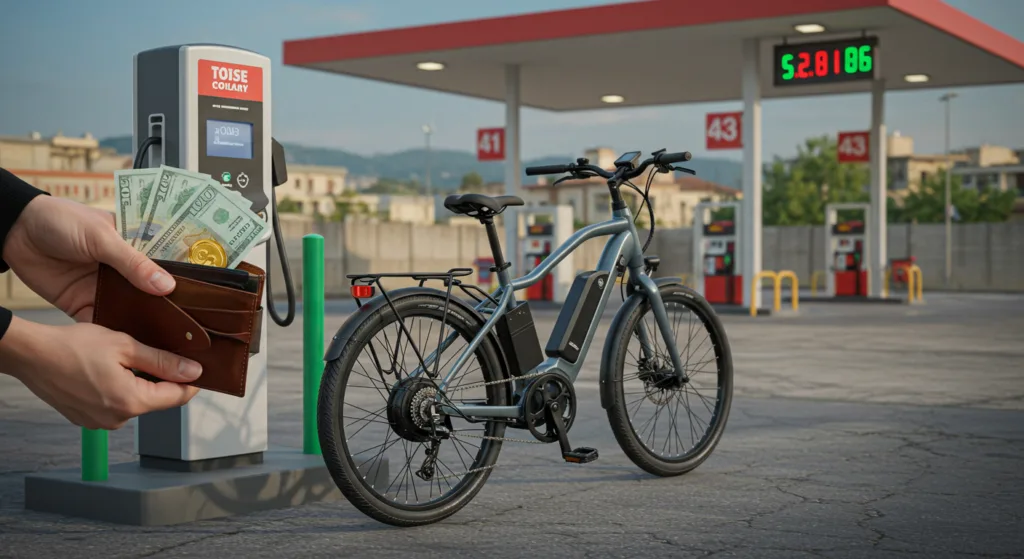
Rising fuel prices are a major concern for daily commuters. If you’re tired of spending hundreds of dollars every month just to keep your vehicle running, switching to an electric bike (e-bike) could be one of the smartest financial decisions you make.
Here’s why e-bikes save you money in the long run:
1.1 No More Gas Expenses
- The average American spends around $2,000 per year on gasoline.
- In contrast, charging an e-bike costs only $0.05 to $0.10 per charge, depending on local electricity rates.
- Even with daily use, an e-bike costs less than $30 per year to charge.
1.2 Lower Maintenance Costs
Unlike cars or motorcycles, e-bikes have fewer moving parts, meaning less frequent and cheaper maintenance.
- No expensive oil changes.
- No engine repairs or costly mechanical breakdowns.
- Battery replacement is needed only every 3 to 5 years, and it costs far less than car maintenance over the same period.
1.3 Reduced Insurance and Parking Fees
- Car insurance in the U.S. costs around $1,500 per year on average.
- E-bikes don’t require insurance, saving you hundreds to thousands annually.
- Many cities now offer free or low-cost bike parking, eliminating the need to pay for parking permits or garages.
By switching to an e-bike, you slash your transportation costs by over 80% while still enjoying a fast and efficient ride.
2. Eco-Friendly Transportation: Reduce Your Carbon Footprint with an E-Bike
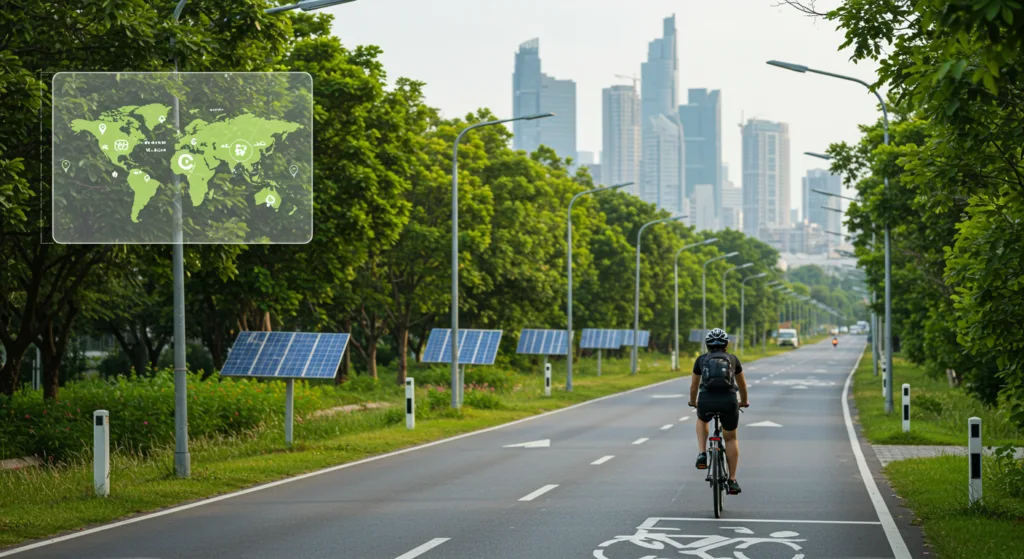
Transportation is one of the biggest contributors to global CO₂ emissions, with cars alone accounting for 16% of all greenhouse gas emissions. Electric bikes offer a sustainable alternative that significantly reduces your carbon footprint while keeping you mobile.
2.1 How E-Bikes Reduce CO₂ Emissions
- A gasoline-powered car emits an average of 4.6 metric tons of CO₂ per year.
- E-bikes, on the other hand, emit only 2 to 5 grams of CO₂ per mile, which is 99% lower than a car.
- Even compared to electric cars, e-bikes use 1/10th of the electricity, making them a far greener option.
2.2 Less Traffic Congestion, Less Pollution
- Studies show that 50% of all car trips in urban areas are under 3 miles—a perfect distance for an e-bike.
- If more people switch to e-bikes, cities can significantly cut down on traffic congestion and smog pollution.
- This leads to better air quality, which directly improves public health.
2.3 Sustainable Battery Technology
Modern e-bike batteries use lithium-ion technology, which:
- Is recyclable and getting more eco-friendly with advancements in battery disposal programs.
- Requires far less energy to charge compared to electric vehicle batteries.
- Can last up to 1,000 charge cycles, reducing electronic waste.
By switching to an e-bike, you actively contribute to cleaner air, lower emissions, and a healthier planet without sacrificing convenience.
3. Enjoy a Faster Commute: Beat Traffic with an Electric Bicycle

In major cities, the average commuter spends over 50 hours per year stuck in traffic. Instead of wasting time in gridlock, an e-bike offers a faster, more flexible alternative—without the stress of rush hour.
3.1 E-Bikes Are Faster Than Cars in Urban Traffic
- In congested cities like New York, car speeds drop to just 7 mph during peak hours.
- E-bikes can legally travel up to 28 mph (Class 3 e-bikes), making them twice as fast as cars in traffic-heavy areas.
- Dedicated bike lanes allow e-bikers to bypass traffic completely.
3.2 No More Waiting for Public Transport
Public transportation can be unreliable, with delays, crowded buses, and long waiting times. With an e-bike:
- You control your schedule, with no dependency on bus or train timings.
- You avoid crowded spaces—a big advantage during flu seasons or pandemics.
- You save money on transit passes, which can cost over $1,000 per year in some cities.
3.3 Easy Parking and Last-Mile Convenience
- Finding a parking spot in a big city can take up to 15 minutes on average, wasting valuable time.
- E-bikes eliminate this hassle—simply lock it up at a bike rack near your destination.
- If you commute partway by train or bus, e-bikes help with the “last-mile problem”, getting you from the station to your final stop effortlessly.
By using an e-bike, you can cut your commute time by 30–50%, avoid frustrating delays, and enjoy a smoother, stress-free ride every day.
4. Improve Your Health: How E-Bikes Promote Fitness and Well-Being
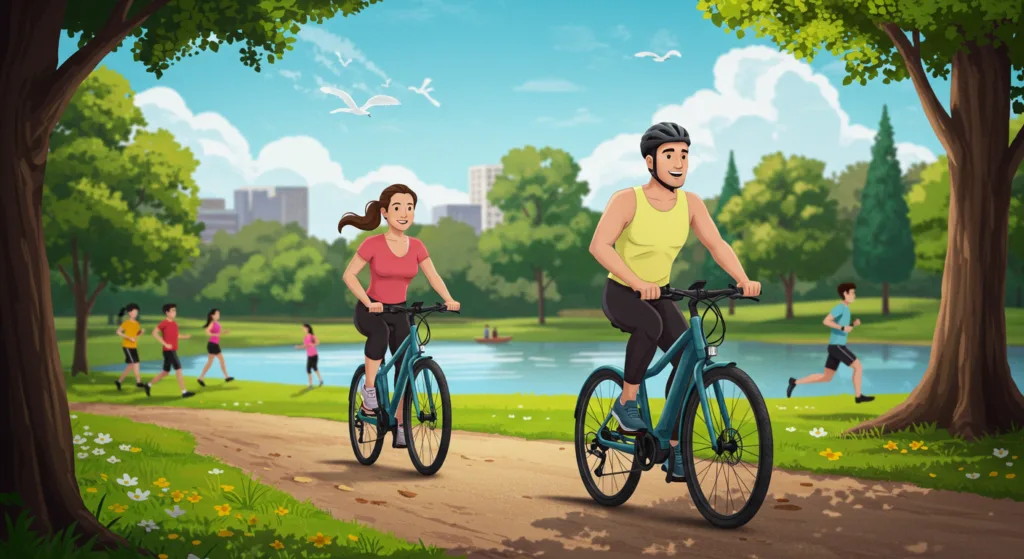
Many assume that electric bikes don’t offer health benefits since they provide pedal assistance. However, research proves that e-bikes promote physical activity, improve mental well-being, and encourage people to ride more frequently compared to traditional bicycles.
4.1 E-Bikes Keep You Active Without Overexertion
- A study from the International Journal of Behavioral Nutrition and Physical Activity found that e-bike riders burn 400–500 calories per hour, which is only 20% fewer calories than a regular bike.
- With pedal assistance, you can still engage your muscles, improving cardiovascular health and endurance without exhausting yourself.
- E-bikes are especially beneficial for older adults and people recovering from injuries, allowing them to stay active safely.
4.2 Mental Health Benefits of Riding an E-Bike
Regular cycling, even with pedal assistance, reduces stress, anxiety, and depression. Studies show that:
- Just 30 minutes of cycling releases endorphins and serotonin, improving mood and mental clarity.
- Outdoor exercise has been linked to lower cortisol levels (stress hormone) compared to indoor workouts.
- Commuting with an e-bike instead of driving reduces road rage and traffic frustration, leading to a more positive start and end to the day.
4.3 E-Bikers Ride More Often Than Regular Cyclists
One of the biggest fitness advantages of e-bikes is that they encourage more frequent riding:
- A study from Portland State University found that e-bike owners ride three times more frequently than traditional cyclists.
- Because e-bikes make longer rides easier, people tend to cycle farther and integrate biking into their daily routines—leading to consistent physical activity over time.
If you’re looking for a fun, low-impact workout that fits into your lifestyle, an e-bike is an excellent solution.
5. Low Maintenance, High Performance: Why E-Bikes Are Hassle-Free
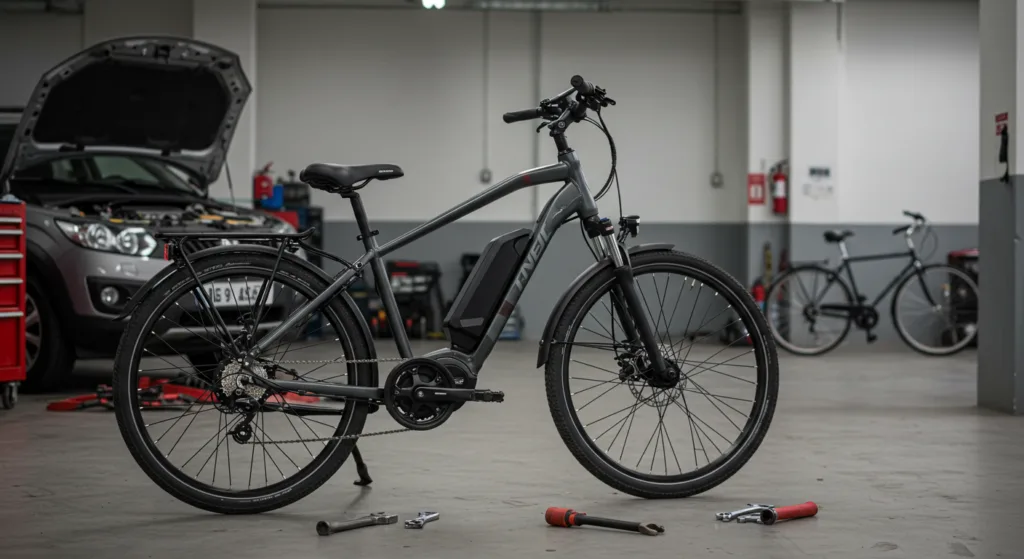
One of the biggest perks of owning an e-bike is its low maintenance requirements compared to cars and motorcycles. Modern e-bikes are designed with durable components that require minimal upkeep, saving both time and money.
5.1 No Complex Engine, No Expensive Repairs
Unlike cars or motorcycles, e-bikes have no combustion engine, which means:
- No oil changes.
- No cooling system or transmission to maintain.
- No expensive mechanical breakdowns.
5.2 Battery and Motor Last for Years
- A quality e-bike battery lasts between 3 to 5 years, depending on usage.
- Brushless motors are sealed and maintenance-free, requiring zero servicing.
- Charging is simple—just plug it into a standard outlet, similar to charging a smartphone.
5.3 Fewer Wear-and-Tear Components
- Unlike gas-powered vehicles, e-bikes don’t have gears that grind or pistons that wear out.
- Chain and brake pad replacements are the most common maintenance tasks, costing only $30–$50 annually.
- Tires last 1,000–3,000 miles, depending on road conditions and riding style.
5.4 Weather-Resistant and Built for Daily Use
Many modern e-bikes feature water-resistant electronics, allowing them to be used in light rain and tough weather conditions without damage.
With basic upkeep, an e-bike can last 5 to 10 years, making it a hassle-free investment for urban commuting and outdoor adventures.
6. Ride Longer with Ease: Experience Extended Range and Battery Efficiency
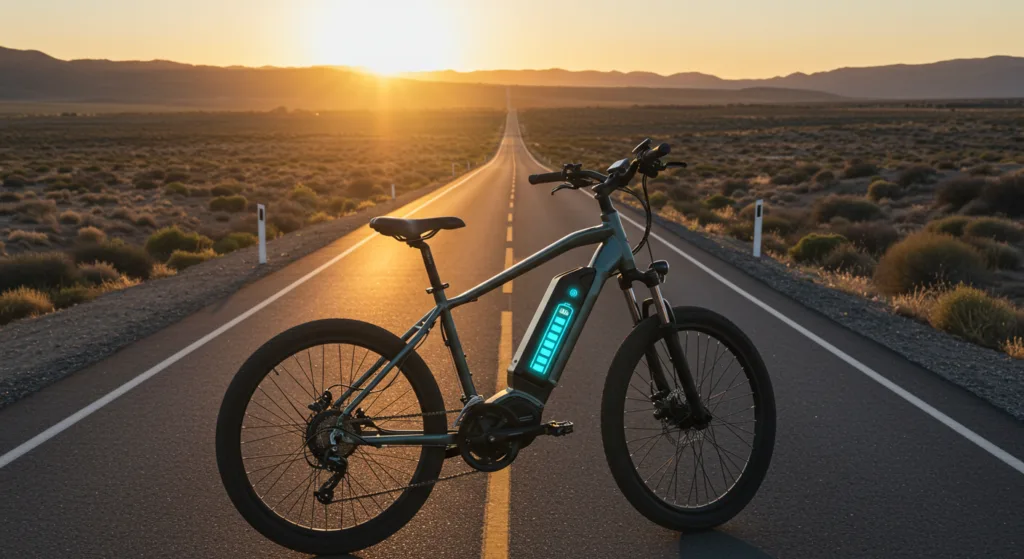
One of the biggest advancements in e-bike technology is extended battery life, allowing riders to travel longer distances without worrying about frequent recharges.
6.1 How Far Can an E-Bike Go?
The range of an electric bike depends on the battery capacity, motor efficiency, terrain, and riding style. On average:
- Entry-level e-bikes have a range of 20–30 miles per charge.
- Mid-range e-bikes can cover 40–60 miles per charge.
- High-end models with 750Wh or 1000Wh batteries can reach up to 100 miles on a single charge.
6.2 Factors That Improve Battery Life
If you want to maximize your e-bike’s range, consider these tips:
- Use pedal assist mode instead of full throttle—it extends battery life by 30–50%.
- Ride on flat terrain—hills drain the battery faster.
- Maintain proper tire pressure—low pressure increases rolling resistance and battery consumption.
- Charge the battery before it drops below 20%, which helps extend overall battery lifespan.
6.3 Fast and Convenient Charging
- Most e-bikes fully recharge in 3–6 hours using a standard outlet.
- Fast-charging options are available on some models, reducing charge time by 50%.
- Removable batteries allow you to charge anywhere—at home, the office, or a café.
6.4 Regenerative Braking for Extra Efficiency
Some high-end e-bikes now feature regenerative braking, which:
- Converts braking energy into battery power.
- Can extend range by 10–20%, especially in stop-and-go traffic.
- Reduces brake wear, lowering maintenance costs.
With improvements in battery technology, riding longer distances is easier than ever, making e-bikes a reliable mode of transportation for both daily commutes and weekend adventures.
7. Versatile for All Terrains: Conquer Hills and Long Distances Effortlessly

One of the biggest advantages of electric bikes is their ability to handle various terrains with ease. Whether you’re navigating steep hills, gravel paths, or long urban commutes, e-bikes provide a smooth and effortless ride.
7.1 Tackling Hills with Electric Assistance
Steep inclines are one of the main reasons people avoid traditional bikes, but e-bikes eliminate this challenge:
- Powerful motors (ranging from 250W to 750W) provide instant torque, helping riders climb hills with minimal effort.
- Pedal assist ensures you don’t get exhausted on steep roads.
- Some e-bikes feature multiple riding modes (Eco, Normal, and Turbo) to adjust power output depending on terrain.
7.2 Ride Comfortably on Rough Terrains
Electric bikes are built for more than just city streets:
- Fat tire e-bikes (4 inches or wider) offer extra stability on sand, snow, and dirt trails.
- Full-suspension e-bikes absorb shocks, making off-road rides smoother.
- Hydraulic disc brakes provide superior stopping power on slippery or uneven surfaces.
7.3 Travel Long Distances Without Fatigue
E-bikes extend your riding range while reducing physical strain:
- A fully charged battery can take you 40–100 miles, depending on the model.
- Pedal assist reduces strain on your legs, making long commutes feel effortless.
- Ideal for touring, camping, and exploring nature without the need for a car.
If you love adventure or need a reliable commuter for diverse road conditions, an e-bike is the perfect solution.
8. Say Goodbye to Parking Hassles: The Convenience of Owning an E-Bike

Parking a car in busy cities can be a nightmare—costly, time-consuming, and frustrating. With an electric bike, parking is never an issue.
8.1 No More Paying for Expensive Parking
- The average driver spends $2,000 per year on parking fees in major cities.
- With an e-bike, you can park for free at bike racks, designated spaces, or even inside your home or office.
8.2 Skip the Search for a Spot
Finding parking in crowded areas can take 15–30 minutes, wasting time and fuel. E-bikes eliminate this hassle because:
- They can be parked almost anywhere—bike racks, sidewalks (where allowed), or indoors.
- Some foldable e-bikes can even be stored under a desk or inside an apartment.
8.3 Theft-Prevention Features for Extra Security
Modern e-bikes come with anti-theft features such as:
- GPS tracking to locate your bike if stolen.
- Smart locks and removable batteries that make stealing more difficult.
- Heavy-duty locks like U-locks and chain locks for added security.
By owning an e-bike, you can eliminate the stress of parking, save money, and enjoy a hassle-free commute.
9. Government Incentives & Rebates: Save Even More When Switching to an E-Bike
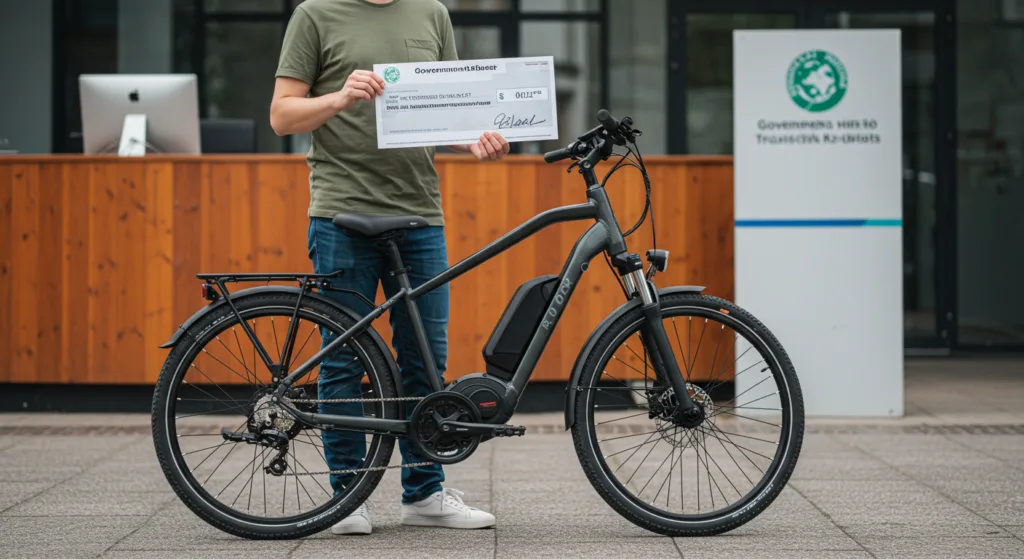
Many governments worldwide are encouraging electric bike adoption by offering rebates, tax credits, and financial incentives to make them more affordable.
9.1 U.S. Federal and State Incentives
- Some states offer rebates of up to $1,500 for purchasing an e-bike.
- The proposed E-BIKE Act in the U.S. Congress aims to provide a 30% tax credit (up to $1,500) on e-bike purchases.
- Many cities have local rebate programs—Denver, for example, has offered $400–$1,200 incentives for e-bike buyers.
9.2 European E-Bike Subsidies
- France offers up to €400 in subsidies for new e-bike buyers.
- Germany provides company tax benefits for employees who use e-bikes for commuting.
- The Netherlands allows employers to lease e-bikes to workers at low monthly costs with tax benefits.
9.3 Canada and Other Countries
- Canada: Provinces like British Columbia offer $1,700 rebates for e-cargo bikes.
- Australia: Some cities provide grants for electric bike purchases as part of green initiatives.
9.4 How to Claim an E-Bike Incentive
- Check with your local government website for current e-bike rebates.
- Some incentives require you to apply before purchase, while others offer post-purchase reimbursements.
- Employers may also offer bike-to-work programs that include e-bike benefits.
By taking advantage of these programs, you can significantly reduce the upfront cost of your e-bike.
10. Join the Future of Mobility: Why E-Bikes Are Revolutionizing Transportation
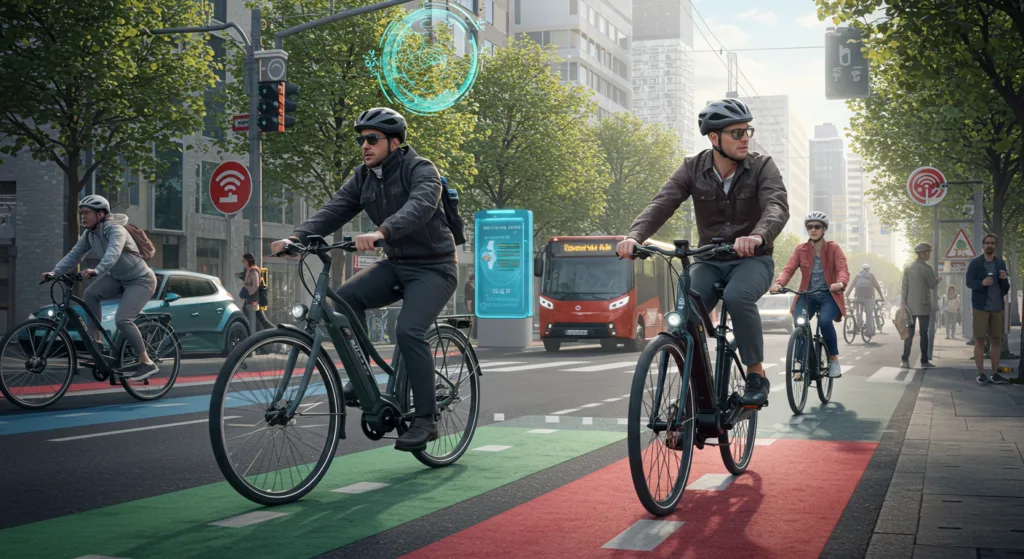
E-bikes are not just a trend—they are transforming the way people commute, travel, and live. With urbanization, rising fuel costs, and climate concerns, electric bikes are shaping the future of transportation.
10.1 The Rise of E-Bike Popularity
- Global e-bike sales are projected to reach 40 million units by 2030, with a market value exceeding $120 billion.
- In cities like Amsterdam and Copenhagen, over 50% of daily commutes are now made by bicycle, including e-bikes.
- E-bikes are outpacing electric car sales in many countries due to affordability and practicality.
10.2 E-Bikes and Smart Cities
Many urban planners are integrating e-bikes into public transport systems:
- Bike-sharing programs now include e-bikes in cities like New York, London, and Berlin.
- Dedicated bike lanes and e-bike parking stations are expanding in major cities.
- E-bikes are reducing traffic congestion and improving air quality in urban environments.
10.3 The Future of E-Bike Technology
- Faster charging batteries with extended range.
- AI-powered smart e-bikes with self-adjusting pedal assist.
- Wireless charging stations for public e-bike fleets.
As cities evolve and technology improves, e-bikes will play a major role in sustainable, efficient transportation worldwide.
Electric bikes are more than just a trend—they are the future of sustainable, cost-effective, and convenient transportation. Whether you’re looking to save money, reduce your carbon footprint, enjoy a healthier lifestyle, or simply beat the traffic, an e-bike offers a smart, hassle-free alternative to traditional commuting.
Now is the perfect time to make the switch! With government incentives, advanced battery technology, and increasing bike-friendly infrastructure, there’s never been a better moment to embrace the e-bike revolution.
🚴♂️ Ready to ride into the future? If you found this article helpful, share it with your friends on Facebook, Twitter, or LinkedIn and help spread the word about the benefits of e-bikes! 🌍🔋



